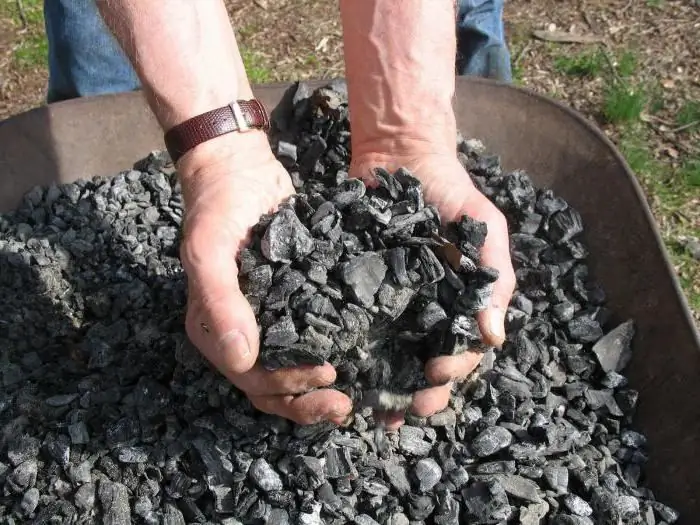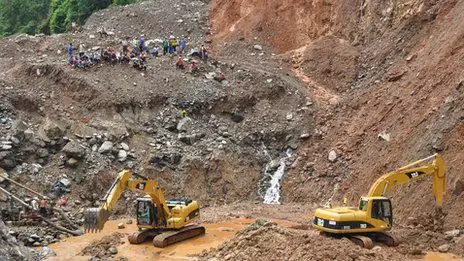2026 Author: Howard Calhoun | [email protected]. Last modified: 2025-01-24 13:10:37
Igneous (igneous) rocks owe their formation to magma, after it erupted from the bowels of the Earth, cooled and froze. They represent the earth's crust by 90 percent or more. And the entire earth's surface is sedimentary and igneous rocks. They extend almost 15 km deep into the Earth.
Major igneous rocks, formation conditions
As a result of tectonic activity, some parts of hot magma erupt into the upper earth layers.

If in the process of cooling erupting structures they do not have time to crystallize, then such rocks represent a non-crystallized whole structure. This is usually pumice or obsidian.
Igneous (igneous rocks) are usually divided into detrital and massive. The former are formed through the destruction of the latter.
Based on the conditions of formation of igneous rocks, the depth of their occurrence, they are divided into coarse-grained, medium-grained,fine-grained and micro-grained.
Because these rocks originate from magma under various conditions of cooling and solidification, they are usually divided into effusive (outflow) and intrusive (deep) ones.

Rocks are massive
They were formed due to the fact that hot magma slowly cooled at a considerable depth under conditions of high pressure. This led to the complete crystallization of the erupted rocks. They are represented by granites, syenites, gabbro and diorites. These igneous deep rocks are distinguished by a significant density, they have a pronounced coarse-grained structure.
Granite
Granite is the most famous deep igneous rock. It usually consists of quartz, mica, feldspar. In some cases, mica is replaced by dark, ferruginous, magnesian minerals.
The color of granite is directly dependent on its main component - feldspar and minerals of dark shades. Can take on reds, grays, and more.
Granite grains have a high degree of adhesion. As a result, its breaks go along the grains of minerals. High strength, resistance to weathering and frost distinguish granite as a material with exceptional building characteristics. It is widely used for the manufacture of various products. Among them are facing slabs, flights of stairs, curbstones, etc. It is widely used in construction work as a derivative of crushed stone of various fractions. Found my usegranite in the construction of hydraulic structures, as well as in monuments and monuments.
Its high physical mechanical characteristics affect its durability. It can reach more than one and a half thousand years.
Syenite
This igneous rock is composed of feldspar (orthoclase) combined with some other dark-colored material. In its structure, syenite is similar to granite. However, it is softer in processing. It is better polished, as it has a high viscosity. Apply syenite in the same areas as granite. Between granite and syenite there is also an average structure called granisyenite.
Diorite
Rock diorite is somewhat denser than granite. Usually painted in shades of green. This material is very labor intensive in processing. It has a significant resistance to abrasion, is perfectly polished, practically does not weather. The main applications are road construction, cladding panels.
Gabbro
It is a crystalline igneous rock, which consists of plagioclase and dark-colored minerals. Sometimes biotite and hornblende are included in the gabbro structure. The colors of this mineral are grey, green to black. Labradorite also belongs to gabbro rocks.
Gabbro has a very high density. Resistant to weathering, difficult to process, but retains polishing for a long time. This material is mainly used in the construction of hydraulic structures, in the production of crushed stone, in facing slabs.
Labradorite, whichis a rather beautiful material, thanks to its colors it is widely used in facing works.

Outflowing rocks
The igneous volcanic rocks that have come to the surface of the earth, as well as deep ones, have the same physical and mechanical properties. However, they have a finely crystalline and glassy structure. They are formed due to the release of magma to the surface with its subsequent solidification. These rocks include quartz porphyry, trachyte, diabase, bas alt.
Quartz Porphyry
Is actually an analogue of granite. Its structure is glassy, it contains inclusions of large quartz grains. Weathered, they fall out of its breed. Usually this material is used as crushed stone or piece stone.
Trachit
In terms of its chemical and mineralogical composition, this rock is very similar to porphyry. It was formed on the surface of the Earth in much later geological periods. The mineral is distinguished by high porosity and low strength characteristics.
Diabase
Actually an analogue of gabbro. Very durable material. Its usual color is dark grey. Perfectly polished. It is mainly used as a starting material for the production of crushed stone. Piece stones, slabs, paving stones are made from diabase. It is also used as a facing material. Under the rule of diabase (1200-1300 degrees Celsius), various products are poured from it. This material (fused diabase) is resistant to acids and alkalis. Has high dielectricproperties.

Bas alt
In terms of its chemical and mechanical parameters, it is actually a complete analogue of gabbro. The color shades of bas alt are dark. It contains a small amount of volcanic glass in its composition. A very dense mineral. Due to their high strength and hardness, bas alt stones are used as a paving material. He found his application in stone casting.

Clastic rocks
They are formed as a result of the deposition of debris from igneous rocks. They have a granular structure with the presence of grains of various sizes. They are divided into loose rocks, which include volcanic ash, pumice, and cemented (represented by volcanic tuff).
Pumice stone
Formed when magma cools, when there is a rapid and intense release of gases from it, which at the same time swells it. This process leads to the formation of a porous vitreous rock. Pumice has a variety of colors, mainly gray, black or white structures. The rock is 70% silica and 15% alumina.

Usually it forms fractions from 5 to 50 mm in diameter. The density of pumice is low, and the porosity reaches 80% of the volume. This breed has found application as crushed stone for creating concrete of light fractions, as a heat-insulating material.
Volcanic ash
This is a gray, black powder. Used as an ingredientstructure for cement mortars or lightweight concretes, as mineral admixtures for cementitious mortars.
Volcanic tuffs
Formed when liquid lava solidifies when sand and ash are added to it. As a result of rapid cooling, vitreous structures are obtained. The color is mostly pink with purple hues.
Use volcanic tuff as sand and gravel for lightweight concrete. It is used to make wall blocks, active additives to cement.
Taking into account the fact that tuff is endowed with good frost resistance and also has decorative qualities, it is used as a facing material for building facades.

Methods of mining
Igneous rocks in construction are widely used. The extraction of natural stone takes place in places of their significant occurrence (deposits). Depending on different conditions, the ways of working out are as follows:
- drilling and blasting;
- buroclinic;
- stone-cutting.
The drilling and blasting method is a sequence of activities, including drilling holes in the faces, laying charges in them, followed by blasting. Thus, the rock is broken from the massif. Mainly applied to hard igneous rocks.
With the wedge method, the stone is processed around the perimeter with pneumatic perforators. Hydraulic or mechanical wedges are introduced into the formed recesses, with the help of which the rock is split along a given plane. Appliesmainly in relation to layered rocks and those with cracks.
In the case of the stone-cutting method, special stone-cutting machines with carbide saw blades are used. Used for working with soft rocks.
Recommended:
Coal: mining in Russia and in the world. Places and methods of coal mining

The coal mining industry is the largest segment of the fuel industry. Every year, the level of coal production increases all over the world, new technologies are mastered, equipment is improved
Gem mining: types and methods, deposits

Gemstone jewelry has been invented since before our era. But in those days, their extraction of the ball was more spontaneous than planned. Mankind began to extract precious natural minerals recently, by the standards of history, of course
Gold mining. Gold mining methods. Mining gold by hand

Gold mining began in ancient times. In the entire history of mankind, approximately 168.9 thousand tons of precious metal have been mined, almost 50% of which goes to a variety of jewelry. If all the mined gold is collected in one place, then a cube would be formed as high as a 5-storey building, having an edge - 20 meters
Silver mining: ways and methods, main deposits, leading countries in silver mining

Silver is the most unique metal. Its excellent properties - thermal conductivity, chemical resistance, electrical conductivity, high ductility, significant reflectivity and others have brought the metal to be widely used in jewelry, electrical engineering and many other branches of economic activity. For example, mirrors in the old days were made using this precious metal. At the same time, 4/5 of the total produced volume is used in various industries
Mining enterprises of Russia: list and industry directions

Mining enterprises in Russia are the backbone of the country's economy. The vast majority of companies operate in conjunction with metallurgical, chemical, processing and other plants

